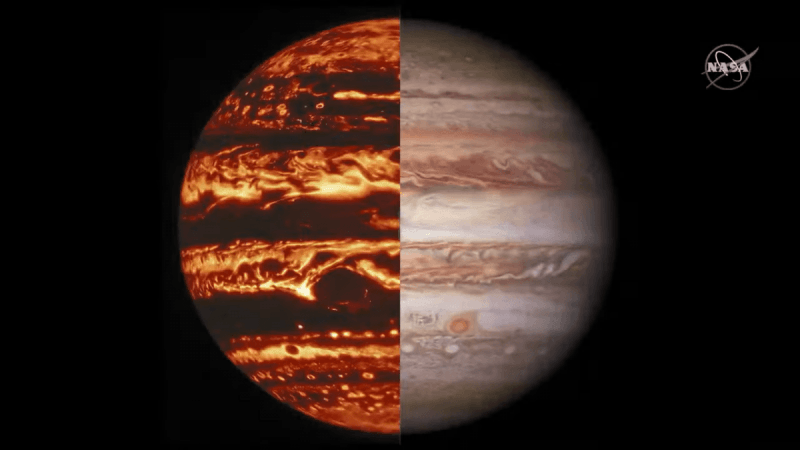NASA has unveiled surprising first 3D view of Jupiter atmosphere, especially the Great Red Spot and cyclonic storms. The visuals provide a fuller picture of how the planet's distinctive and colorful atmospheric features offer clues about the unseen processes below its clouds.
The results highlight the inner workings of the belts and zones of clouds encircling Jupiter, as well as its polar cyclones and even the Great Red Spot by the Juno spacecraft that passed twice it to determine how far under the apparent cloud tops the vortex spreads.
Juno's discovery was documented in two studies published in the journal Science. They revealed that the Great Red Spot is between 124 and 311 miles (200 and 500 kilometres) deep, spreading far further into the gas giant than previously thought.

The findings
Although the Great Red Spot is firmly established, scientists discovered that it is still shallower than the storm's zonal jets, which reach depths surpassing 1,864 miles (3,000 kilometres).
Science assumed the storm's depth and the planet's weather layer would be limited to where light can penetrate or water and ammonia condense — the cloud level. The storm wasn't a minor occurrence, the researchers discovered.
While the storm continues to roar, the size of the spot continues to shrink. It was twice the diameter of the Earth in 1979. The spot has diminished by at least a third since then.
Juno discovered that the gas giant features five cyclonic storms creating a pentagon at its south pole and eight cyclonic storms forming an octagon at its north pole.
Five years later, when Juno studied the cyclones using the Jovian Infrared Auroral Mapper, it discovered that the storms remained in the same place. Polar cyclones exhibited patterns of attempting to migrate toward the poles but were repelled by the cyclones atop each pole. This clarifies why the storms have stayed put.
The study team discovered that ammonia moved in an up-and-down and north-south pattern around the jet streams. Jupiter's circulation cells resemble Earth's Ferrel cells. Jupiter has eight Ferrel cells per hemisphere compared to Earth's one.

NASA Juno mission
On Thursday, August 5, NASA's Juno space project celebrated a decade since its launch. The Juno mission launched in 2011. After a five-year voyage, the probe reached an elliptical polar orbit around Jupiter.
NASA prolonged the Juno mission to July 2021 in June 2018. The agency extended it again in 2021 until September 2025, thus the space probe will likely continue to provide data for the next four years.
On Jupiter, Juno will measure its magnetic field and polar magnetosphere. It will also look for hints regarding the planet's formation, such as a rocky core, water content in the inner atmosphere, mass distribution, and deep winds that may exceed 620 km/h (390 mph).
Jupiter's stripes extend well into the planet's atmosphere, according to Juno. The space probe came within 645 miles of Jupiter's moon Ganymede, the closest a spacecraft has come since NASA's Galileo contacted Ganymede in 2000.
Juno is the second spaceship to circle Jupiter, following the nuclear-powered Galileo orbiter that orbited the planet between 1995 and 2003. Since 1830, astronomers have been studying the Great Red Spot.















